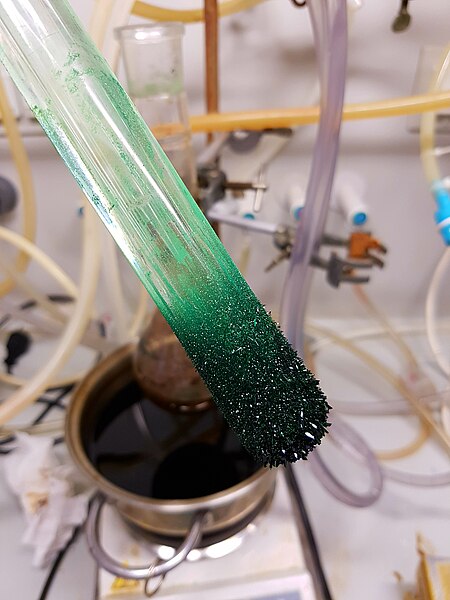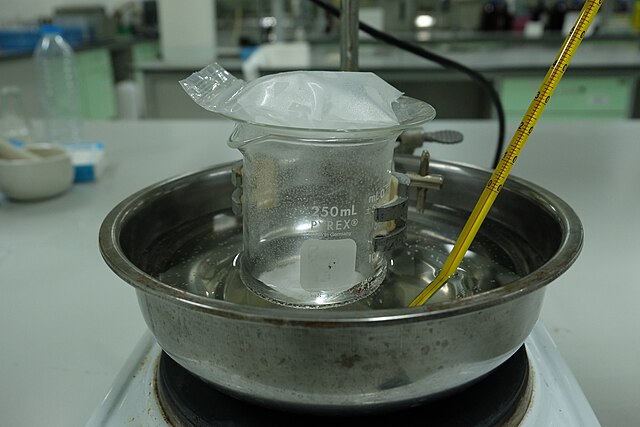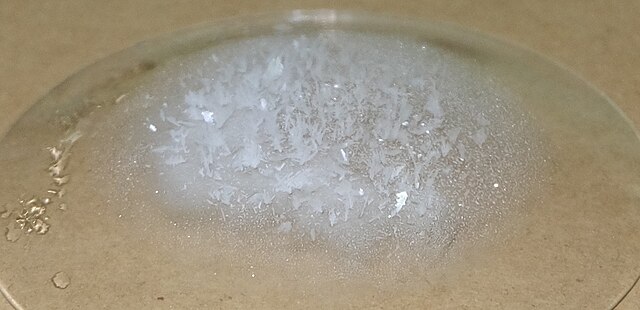Snow comprises individual ice crystals that grow while suspended in the atmosphere—usually within clouds—and then fall, accumulating on the ground where they undergo further changes. It consists of frozen crystalline water throughout its life cycle, starting when, under suitable conditions, the ice crystals form in the atmosphere, increase to millimeter size, precipitate and accumulate on surfaces, then metamorphose in place, and ultimately melt, slide or sublimate away.
Norwegian train plowing through drifted snow
Cold northwesterly wind over Lake Superior and Lake Michigan creating lake-effect snowfall
Freshly fallen snowflakes
An early classification of snowflakes by Israel Perkins Warren
Sublimation (phase transition)
Sublimation is the transition of a substance directly from the solid to the gas state, without passing through the liquid state. The verb form of sublimation is sublime, or less preferably, sublimate. Sublimate also refers to the product obtained by sublimation. The point at which sublimation occurs rapidly is called critical sublimation point, or simply sublimation point. Notable examples include sublimation of dry ice at room temperature and atmospheric pressure, and that of solid iodine with heating.
Dark green crystals of nickelocene, sublimed and freshly deposited on a cold finger
Dry ice subliming in air
Experimental set up for the sublimation reaction of naphthalene Solid naphthalene sublimes and form the crystal-like structure at the bottom of the watch glass
Solid compound of naphthalene sublimed to form a crystal-like structure on the cool surface.








